Earl A. Hoyt - 6th Infantry -England Printed New Testament Bible - Meuse-Argonne Offensive
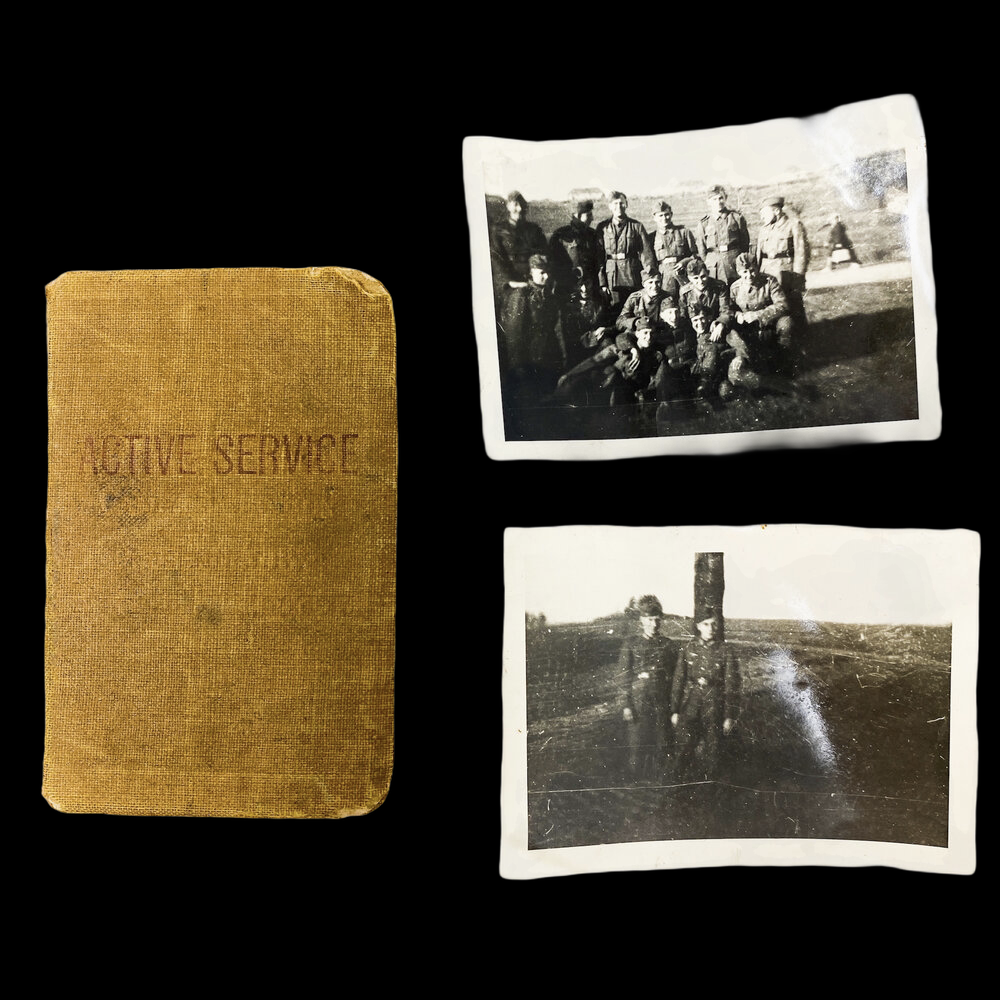
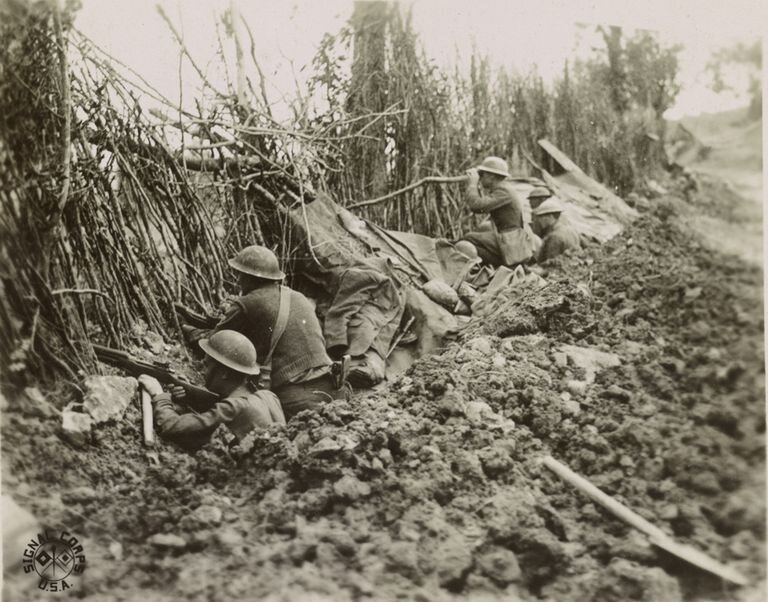

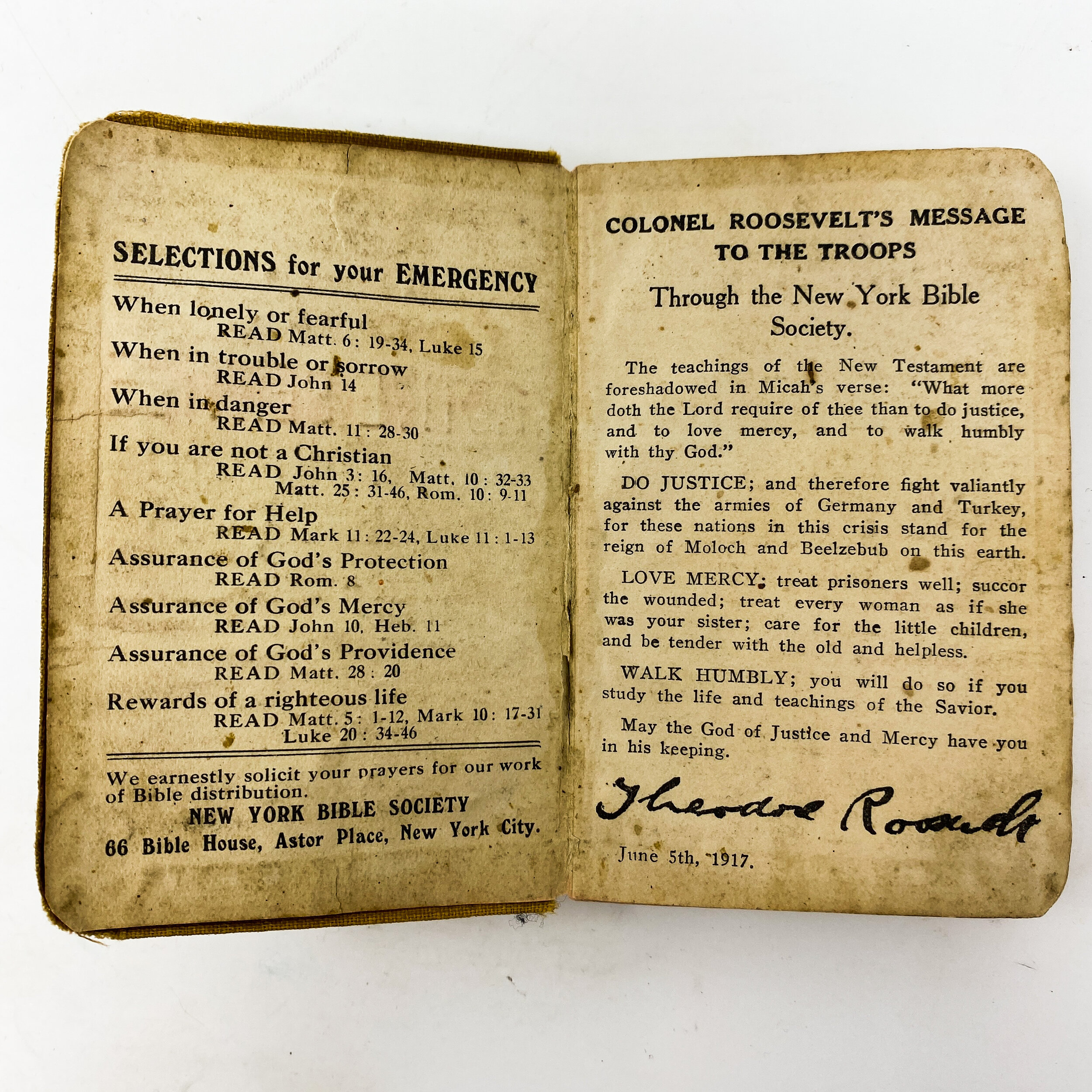


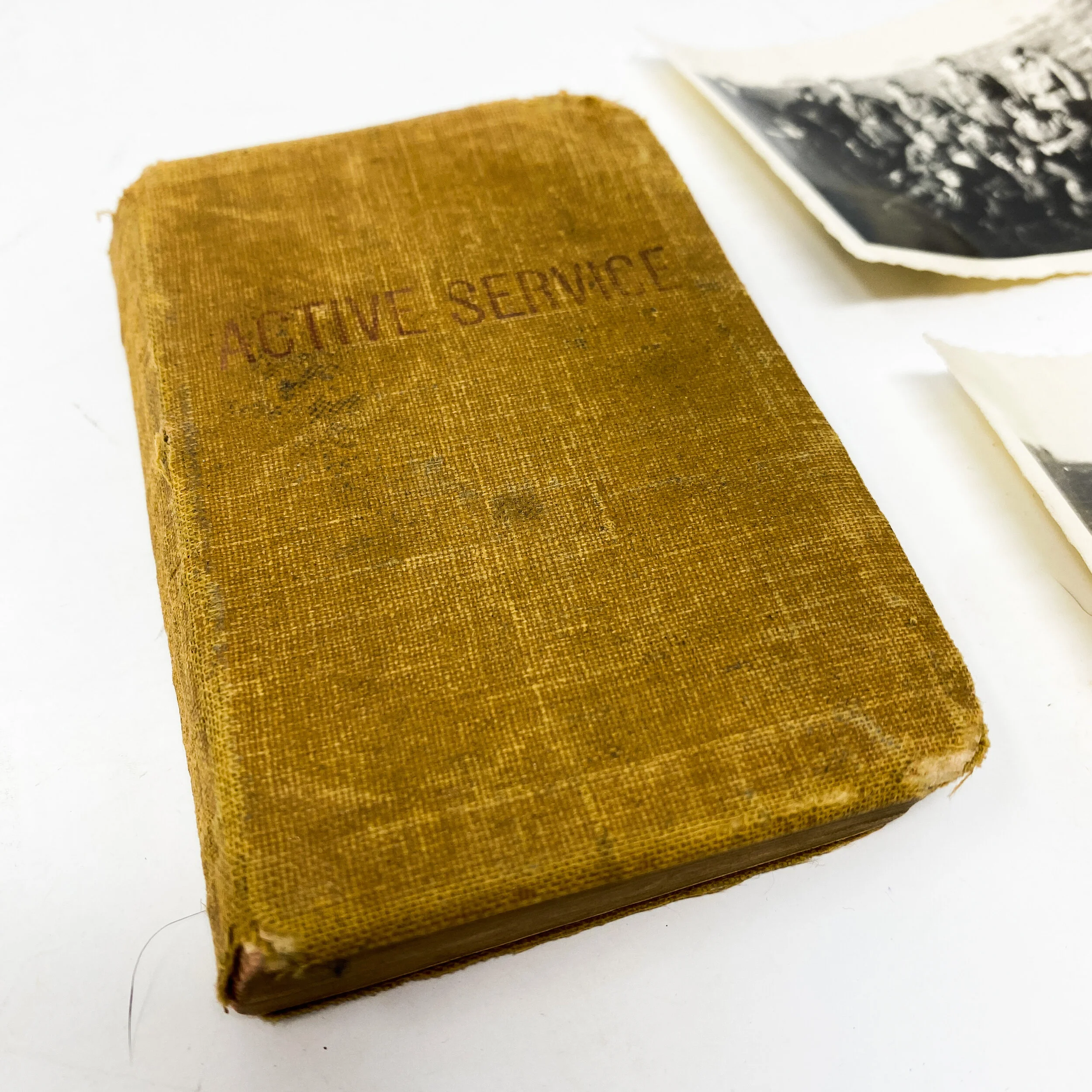

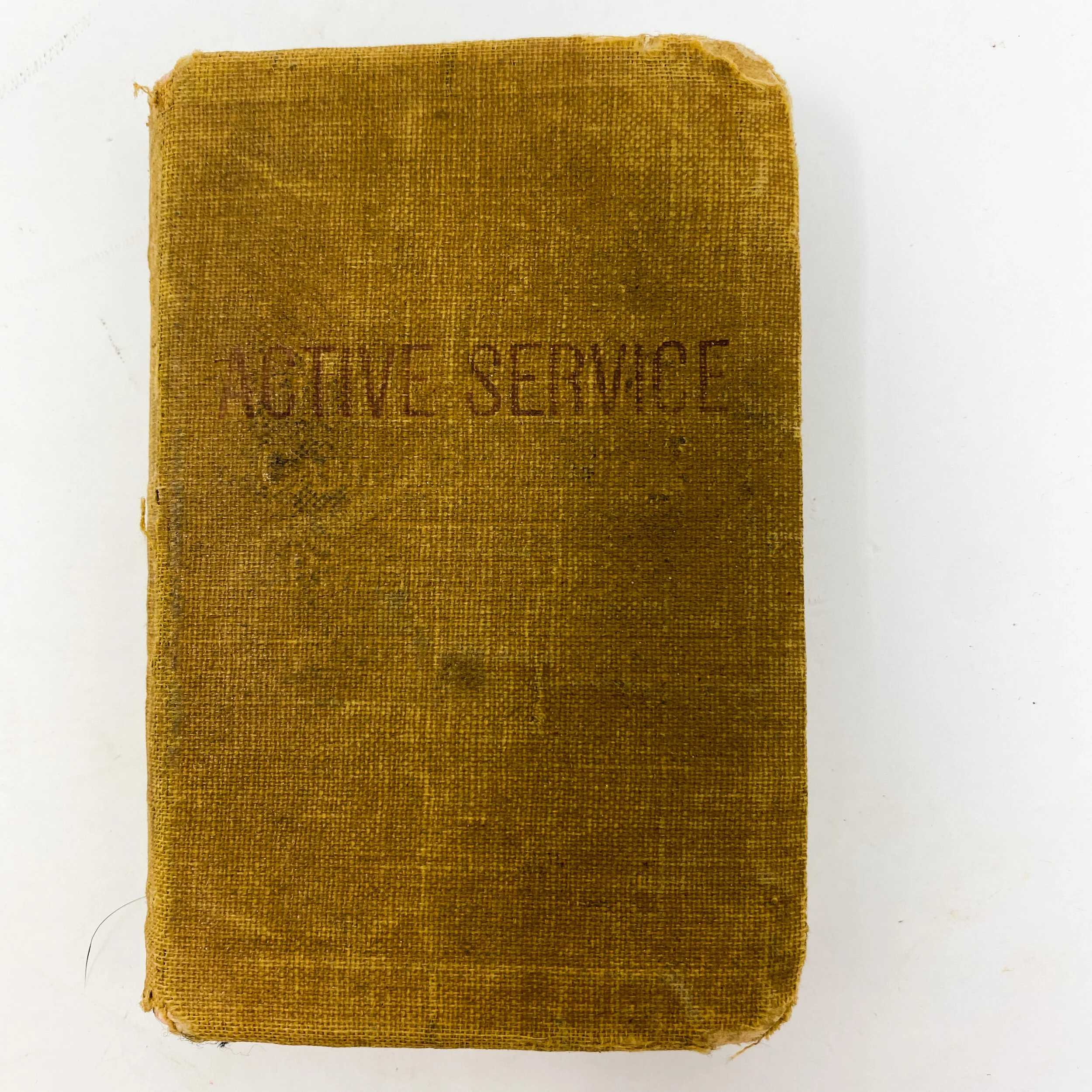

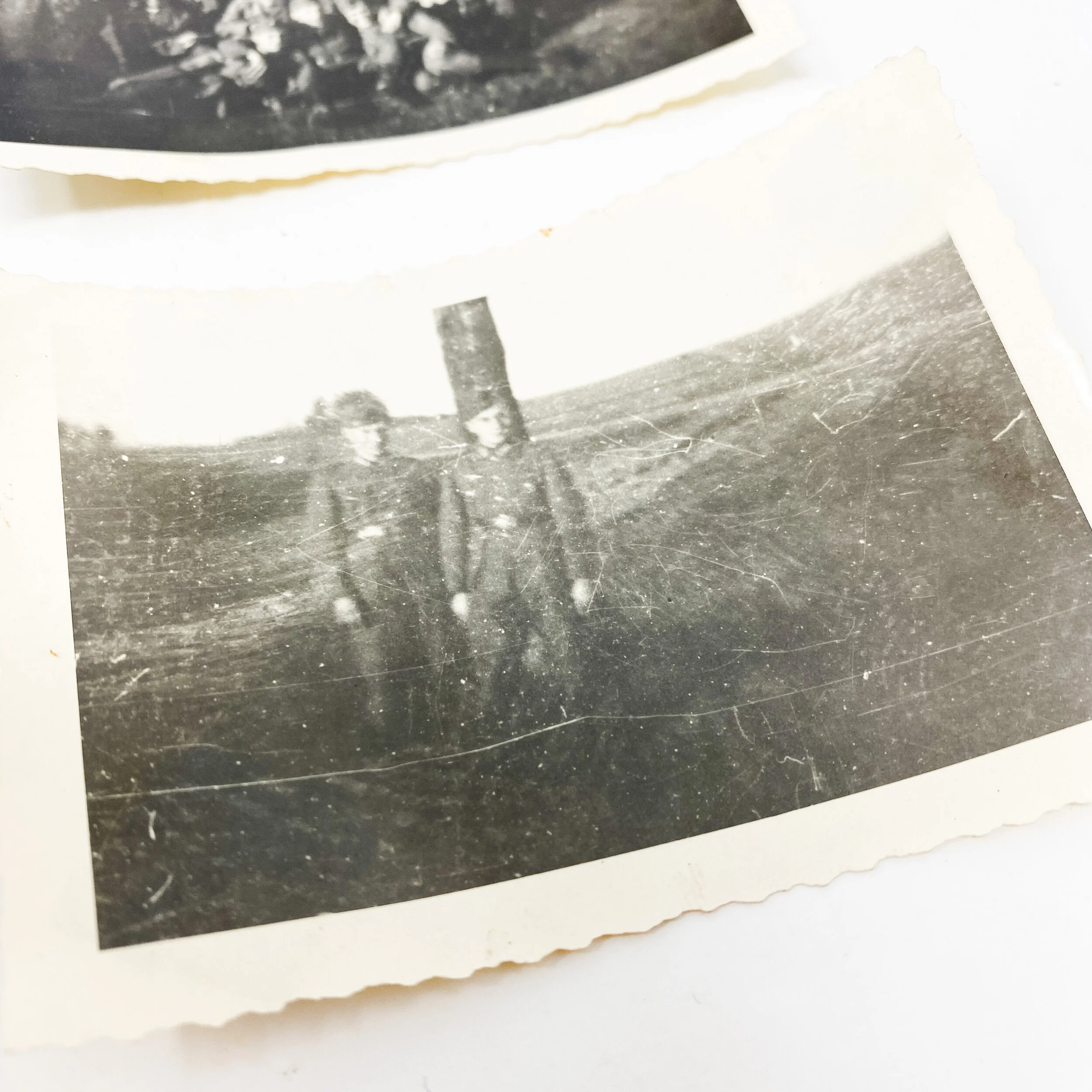
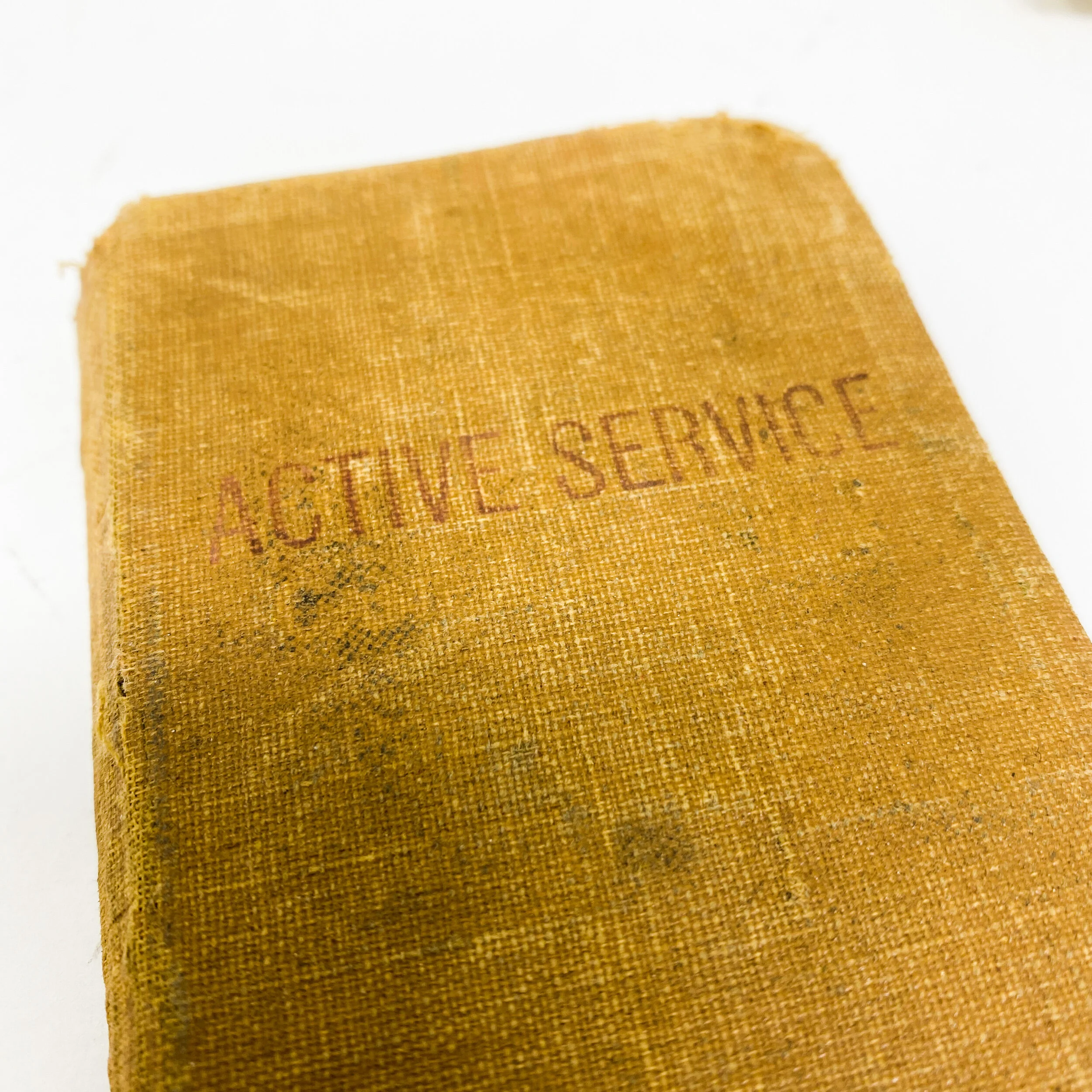
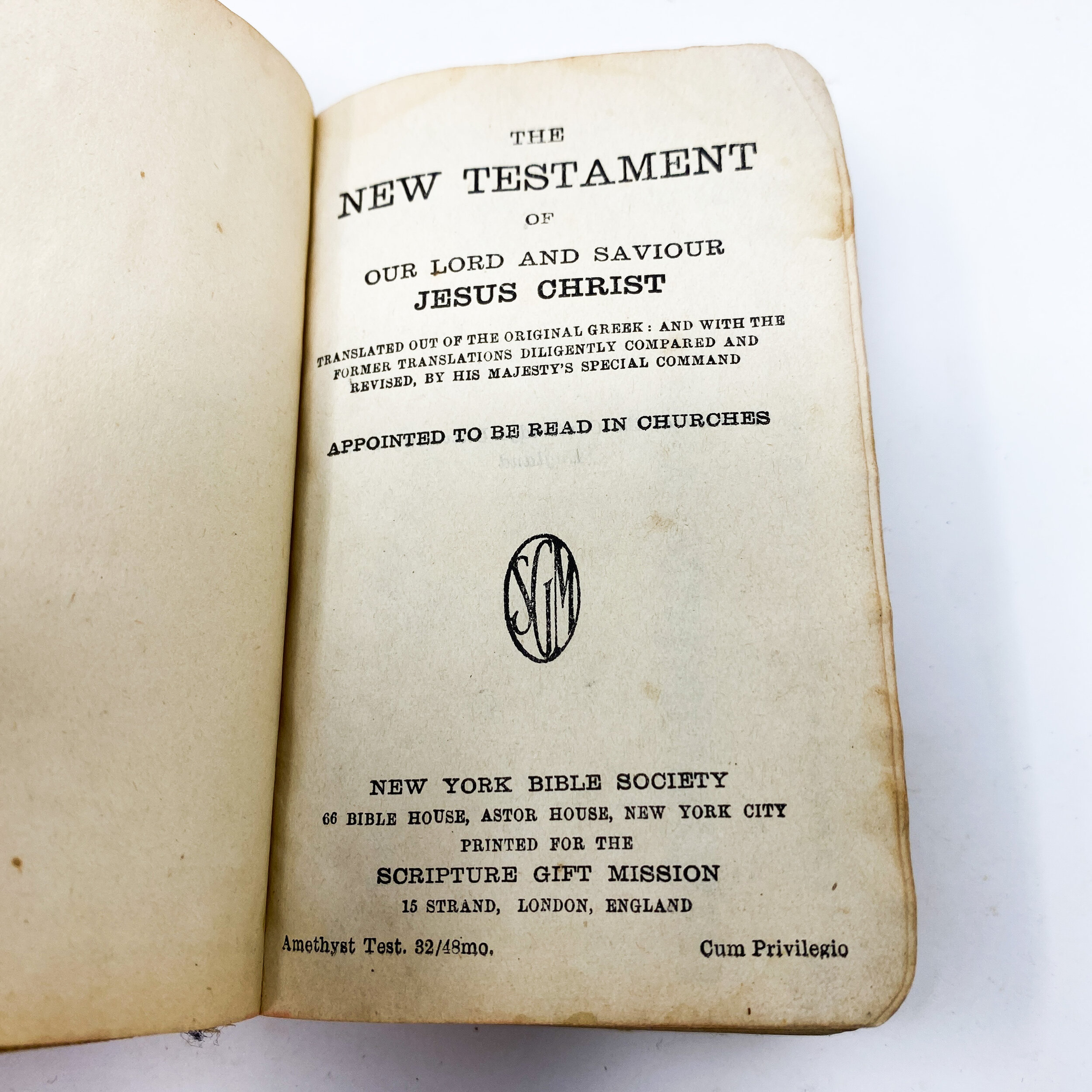
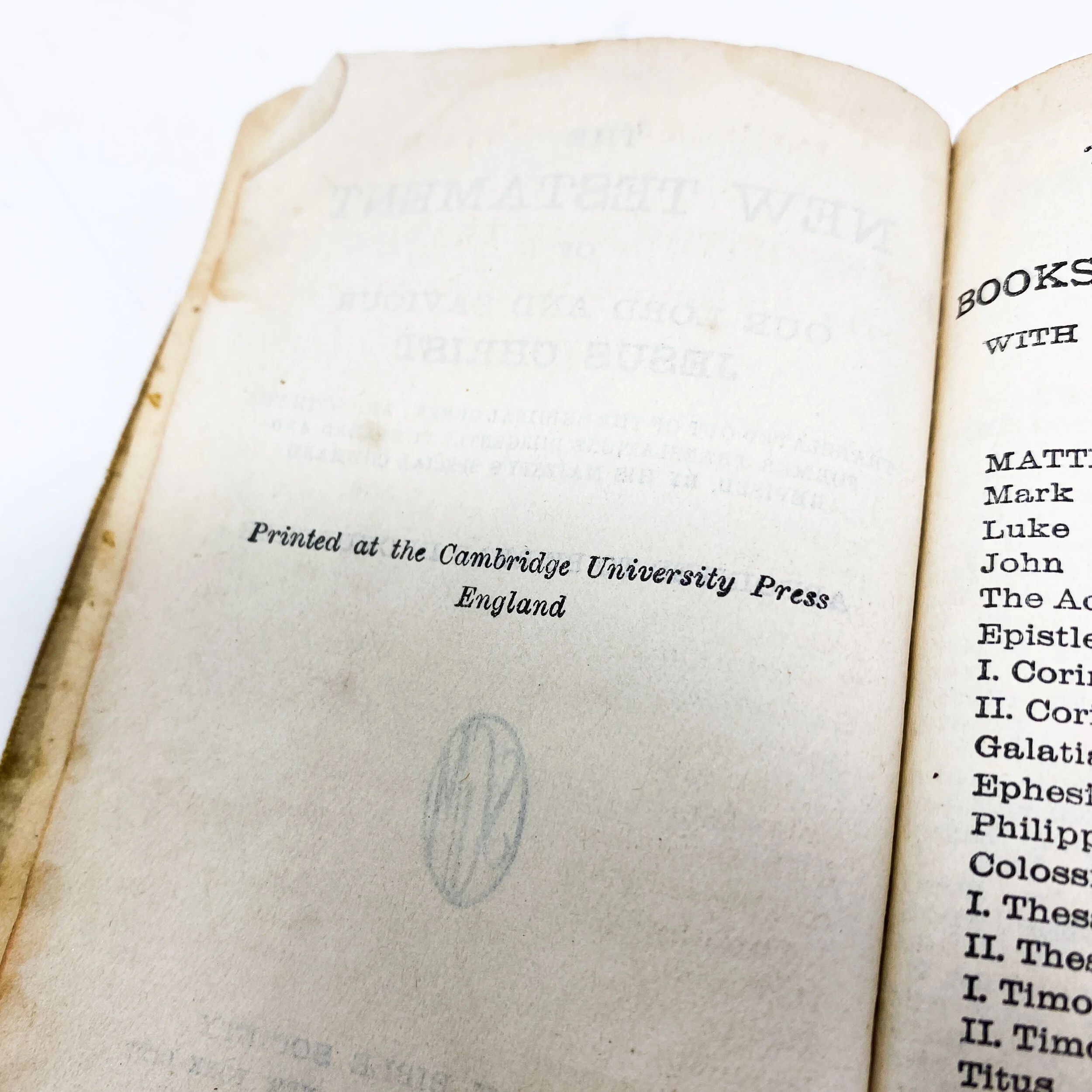

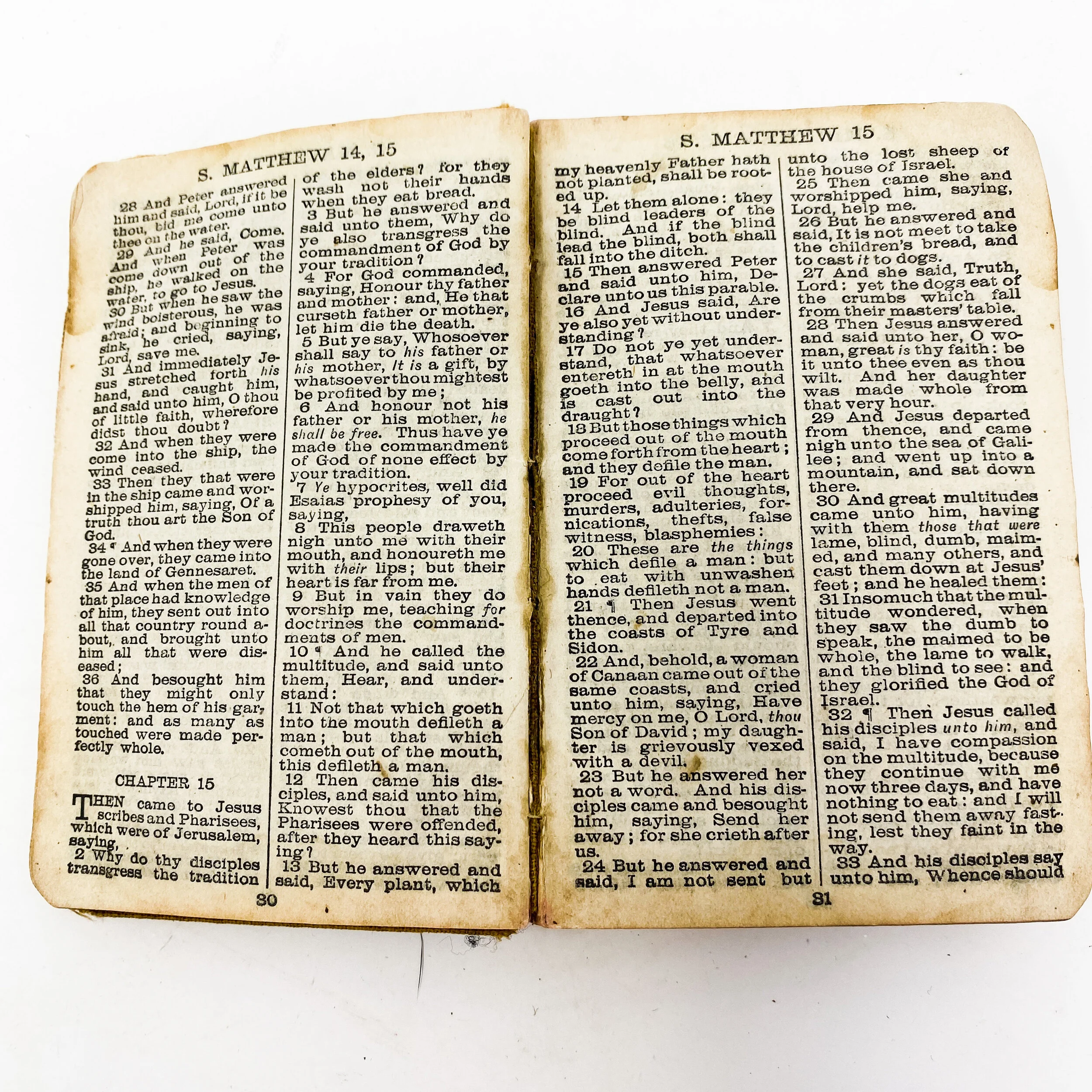


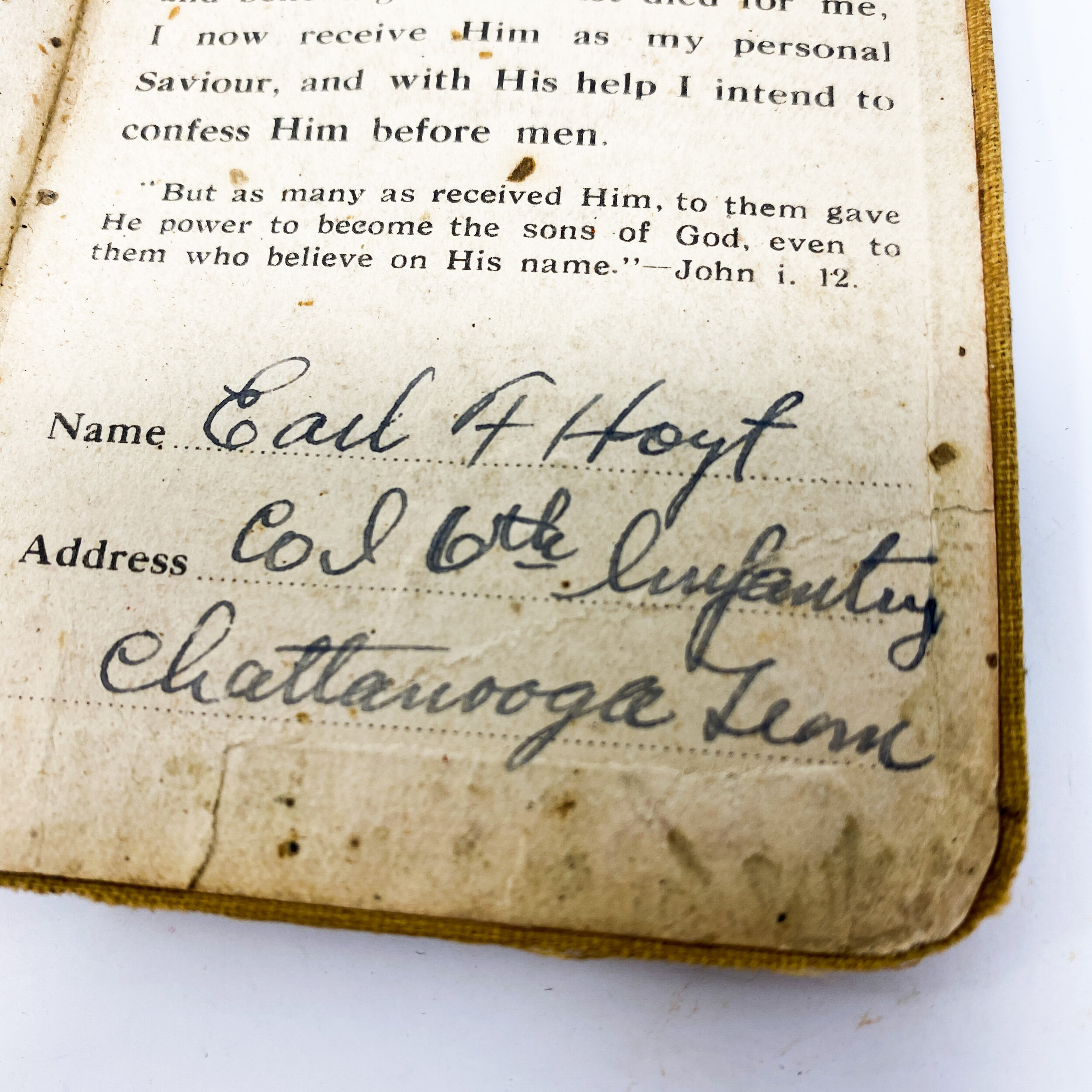
Earl A. Hoyt - 6th Infantry -England Printed New Testament Bible - Meuse-Argonne Offensive
This rare named World War I Era soldier’s New Testament Bible is marked as “Printed at the Cambridge University Press England”. The Bible is in good condition. The Bible was carried over the course of World War I by Earl Hoyt of the 6th Infantry Division (known as "Red Star" and formerly called the "Sight Seein' Sixth"). Over the course of the war Earl Hoyt and the 6th Division saw combat in the Geradmer sector, Vosges, France, 3 September – 18 October 1918, and during the Meuse-Argonne offensive 1–11 November 1918. Separately the 11th Field Artillery Battalion became engaged earlier in the Meuse-Argonne offensive and fought from 19 October to the Armistice.
The inside of the New Testament Bible is inscribed with Hoyt’s information. Bibles like this were carried by soldiers and were sometimes used as a separate identification tool if soldiers were killed in action. The binding of the Bible is in relatively good condition and the pages remain fully intact with some minor spots of staining on certain pages. The bible also contains original WWI photos of Hoyt that were found inside the pages.
What makes this Bible so unique is the inside section titled “Colonel Rossevelt’s Message to the Troops” and is signed and dated June 5th, 1917. The Bible also contains a section titled “Sections for your Emergency” and contains passage to read if a soldier is: IN DANGER, A PRAYER FOR HELP, LONELY AND FEARFUL, ASSURANCE FOR GOD’S MERCY, ETC.
6th Infantry:
The Sixth Division was organized in November of 1917 as a square division consisting of the 51st, 52nd 53rd and the 54th Infantry Regiments, the 16th, 17th and 18th Machine-Gun Battalions and the 3rd, 11th and 78th Field Artillery Regiments. The units of the division gathered in New York and left for France in July of 1918. After marching and training all over western France, the Sixth was assigned on August 31st to the Vosges sector. There, a chain of lofty wooded peaks had stalemated both the French and German armies. Their mission was the defense of a 21-mile. The Division engaged in active patrolled in No Man’s Land and behind the Boche lines. Daily German artillery concentrations of high explosives and gas shells kept the 6th supporting artillery busy with counterbattery fire. In addition infantry platoon strongpoints defended against German raiding parties which launched their attacks using liquid fire and grenades.
The Division developed its reputation for hiking when, prior to the Argonne Offensive, it engaged in extensive fake marches, often under enemy artillery and air bombardment, to deceive the Boche into thinking a major attack was to take place in the Vosges sector. Relieved and reassigned on October 10, 1918, the 6th Division hiked to an assembly area, marching over mountains and broken trails, usually in the dead of night.
After another short period of training, consisting primarily of forced marches, the Division hiked itself into the closing campaign of the war, the Meuse-Argonne offensive. In Corps reserve, the 6th was used in place of an unavailable cavalry division to try to maintain contact with the rapidly retreating Germans. Pulling machine-gun carts and ammo carts by hand, the best hiking outfit in the AEF marched from one front to another, usually on muddy bypaths and rain-soaked fields, to establish and incredible record of forty hiking days in a sixteen-day campaign. Finally moved to another part of the front to maintain the brunt of the attack, the 6th reached the assigned area on the scheduled date, November 12, 1918, to find the war at an end, its reputation as the “Sightseeing Sixth” assured.
During its three months at the front, the 6th Division lost 227 men killed in action or died of wounds. It maintained an active defense in one important sector and played a major role in the tactical plan in another. The men of the 6th had distinguished themselves in combat, many earning the Distinguished Service Cross and Croix de Guerre. The Division was highly commended by General Pershing for its contribution to the final victory.
After the Armistice, the 6th continued its hikes through France and Germany to spread the fame of the six-point Red Star, adopted as the Division insignia on November 19, 1918. The bulk of the Division returned to the States in June of 1919 aboard the USS Leviathan. The Division continued its service at Camp Grant, Illinois and was deactivated on September 30, 1921.